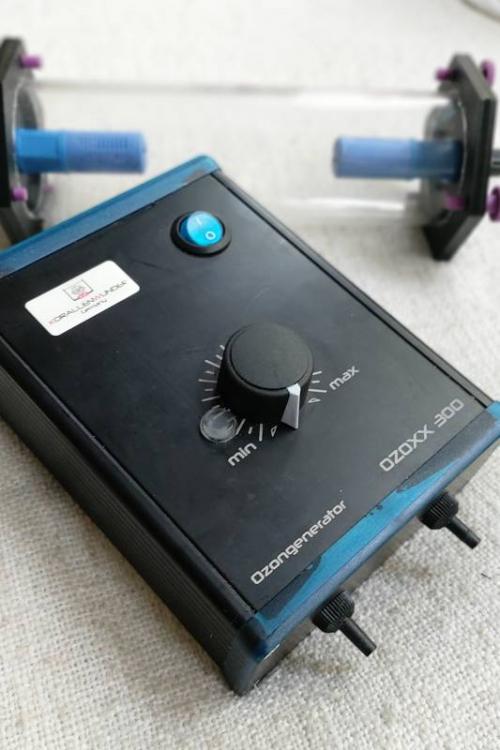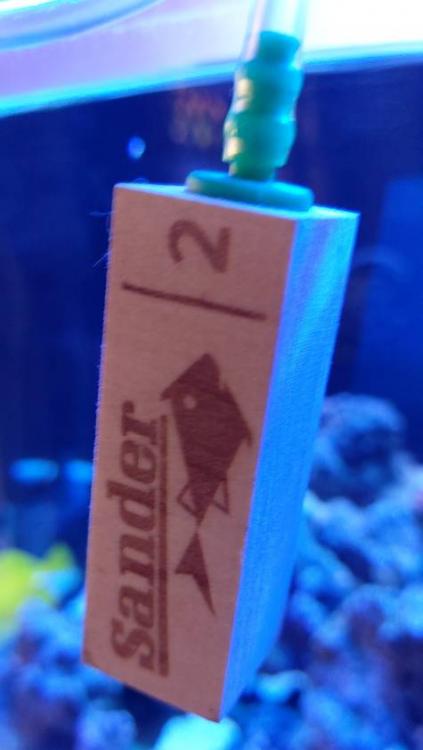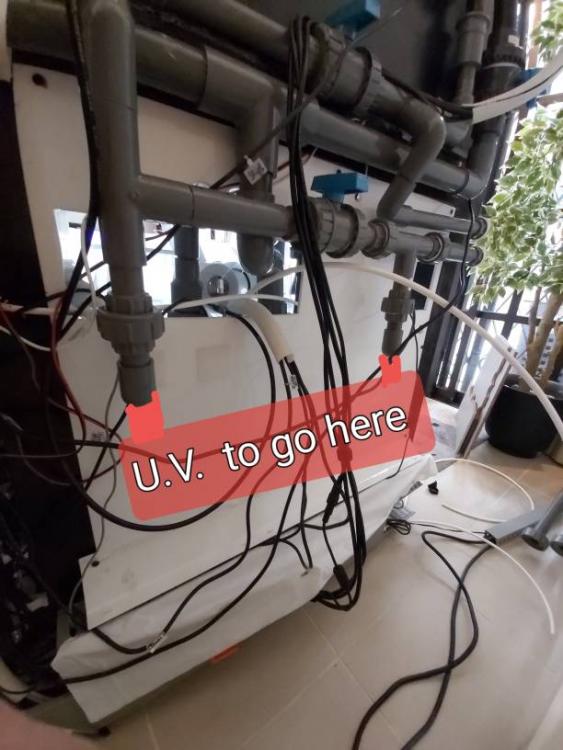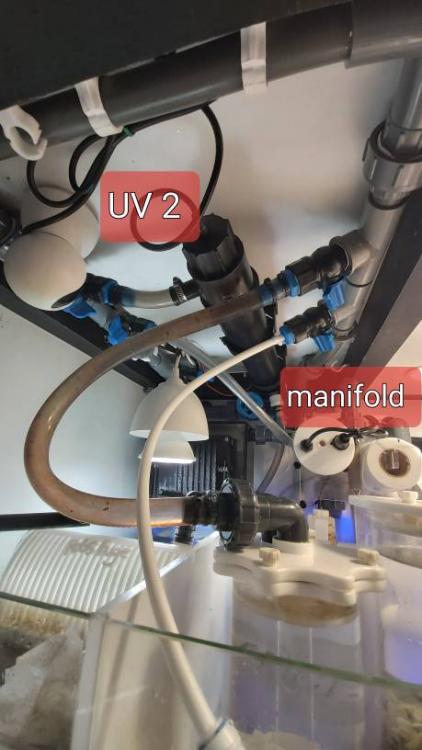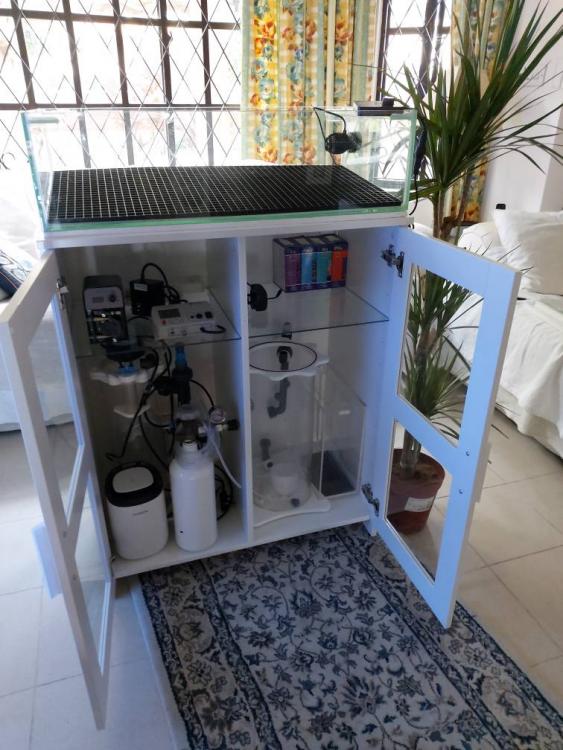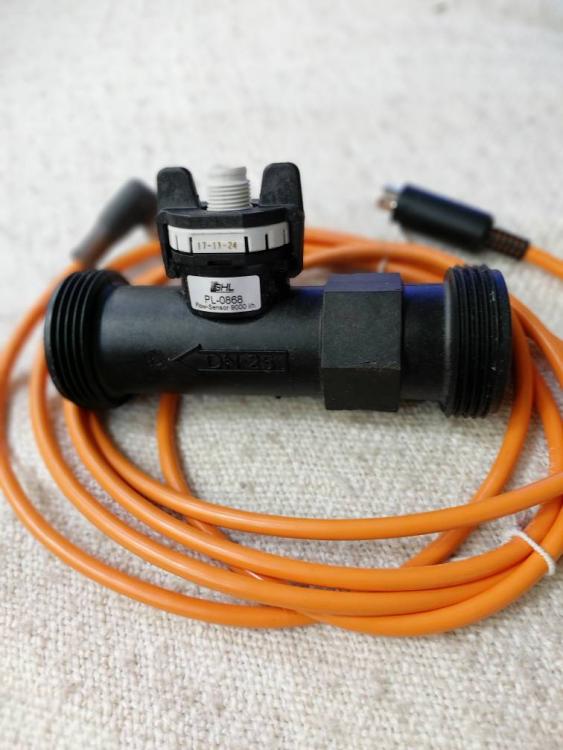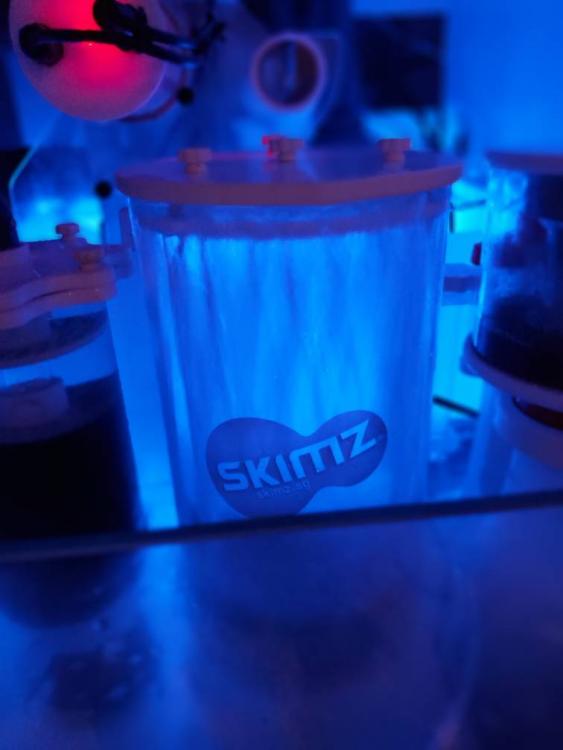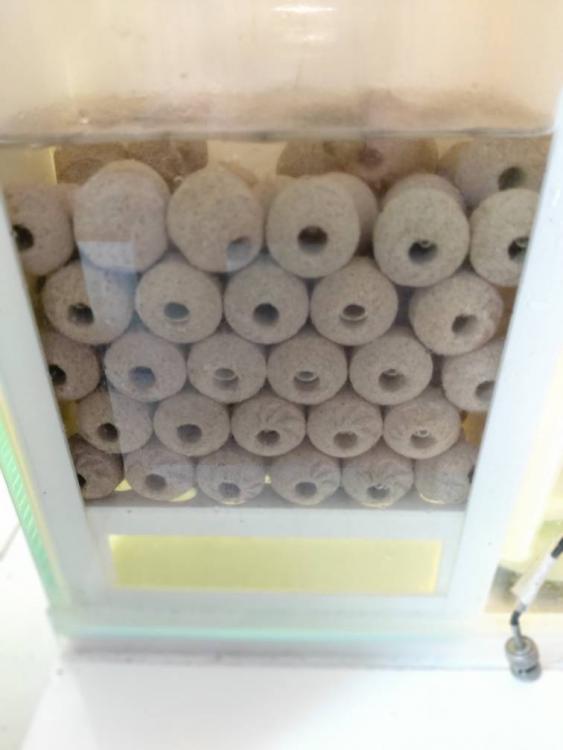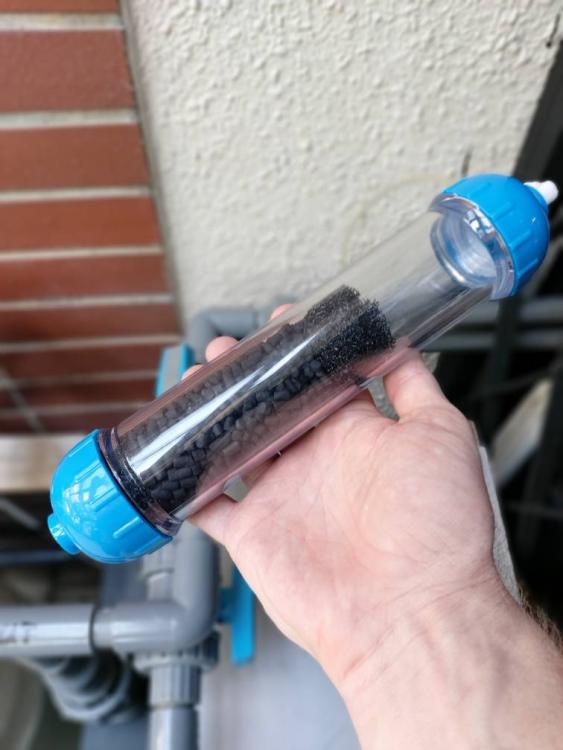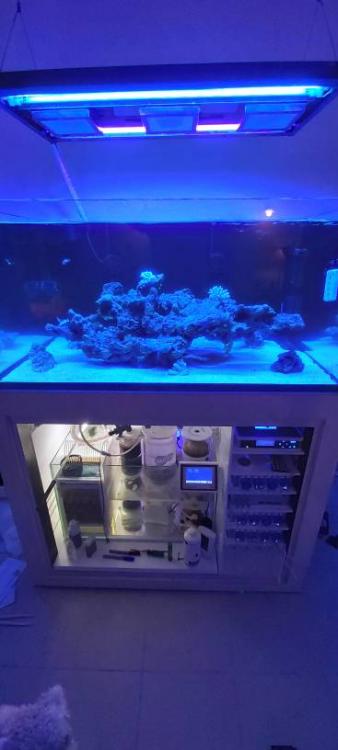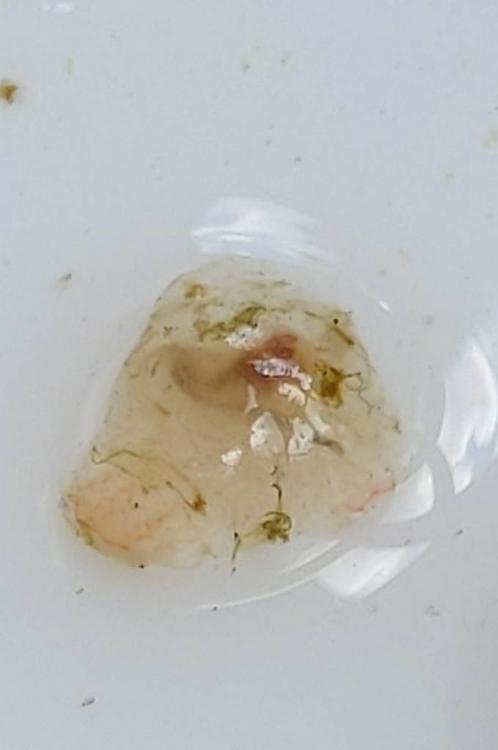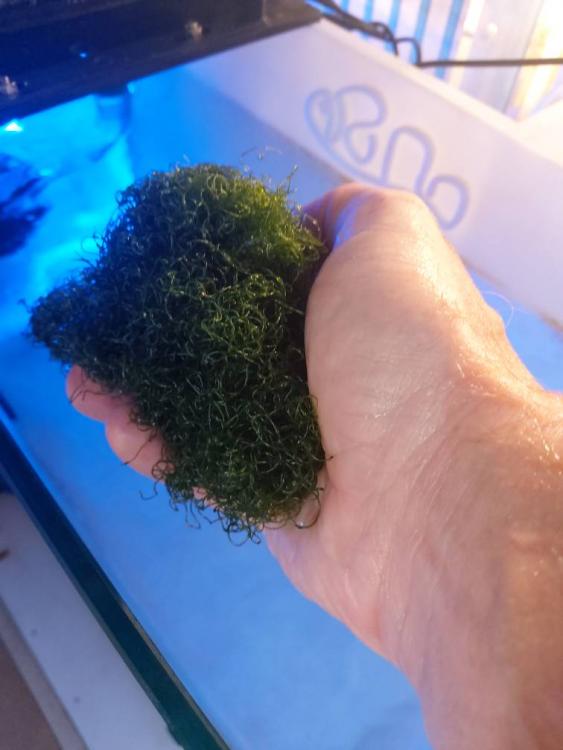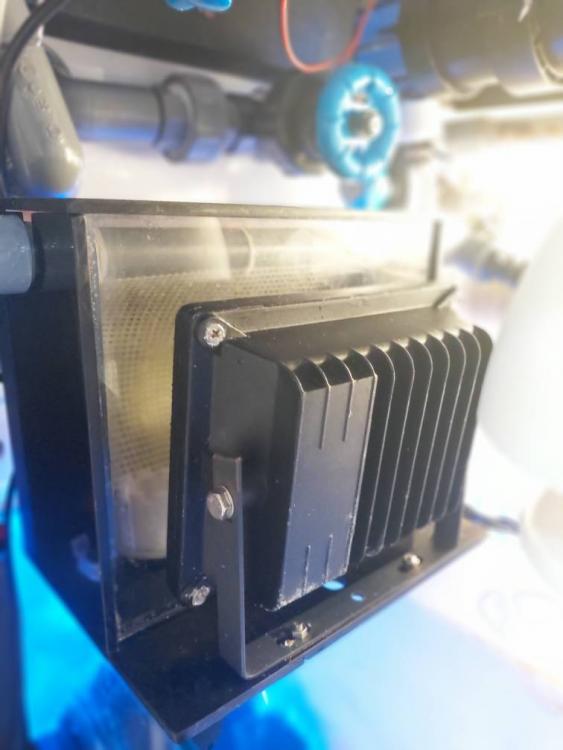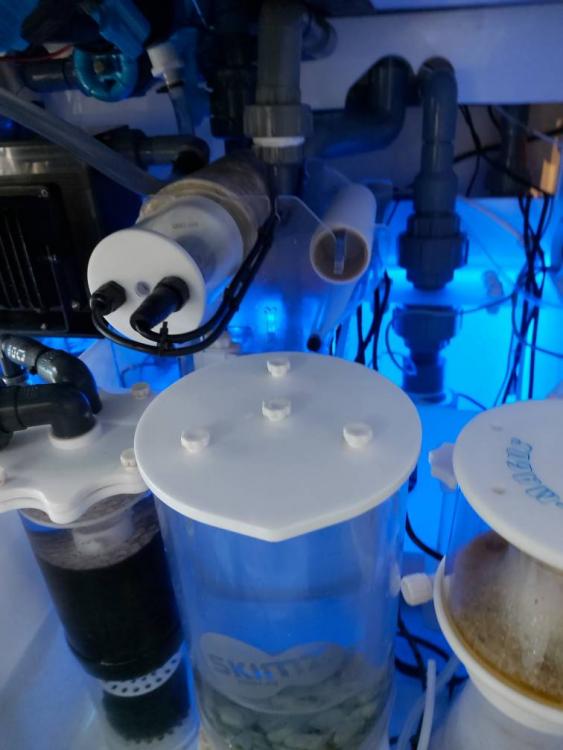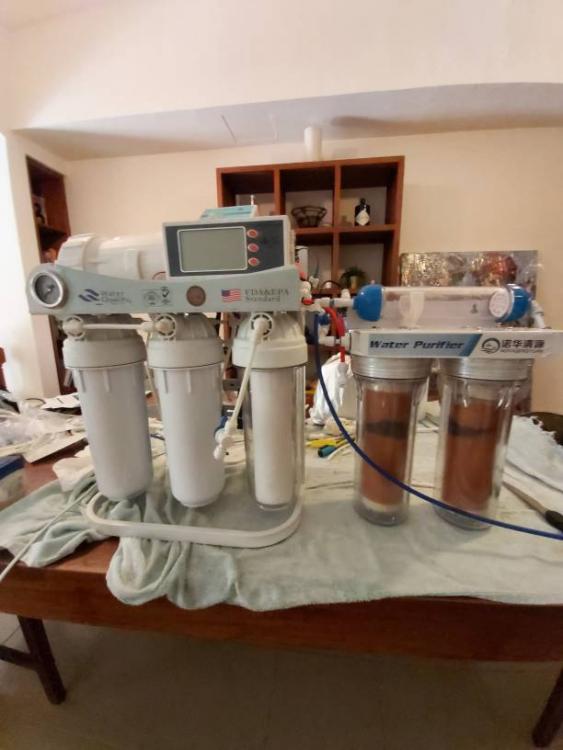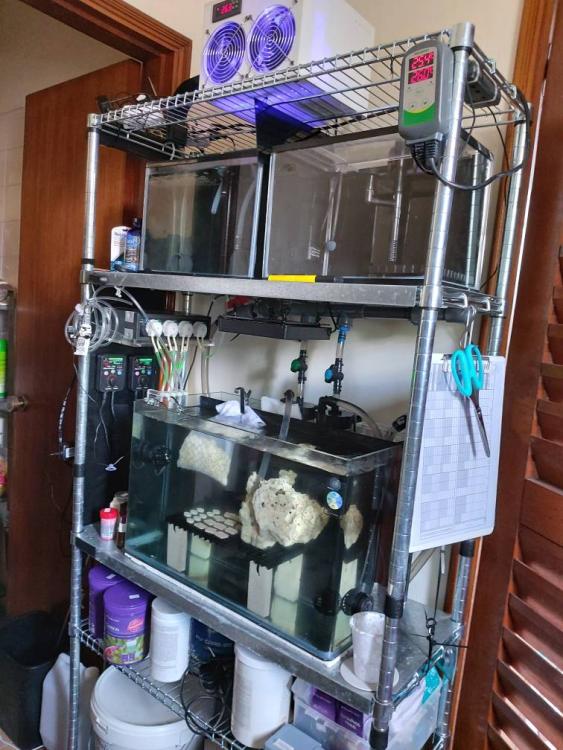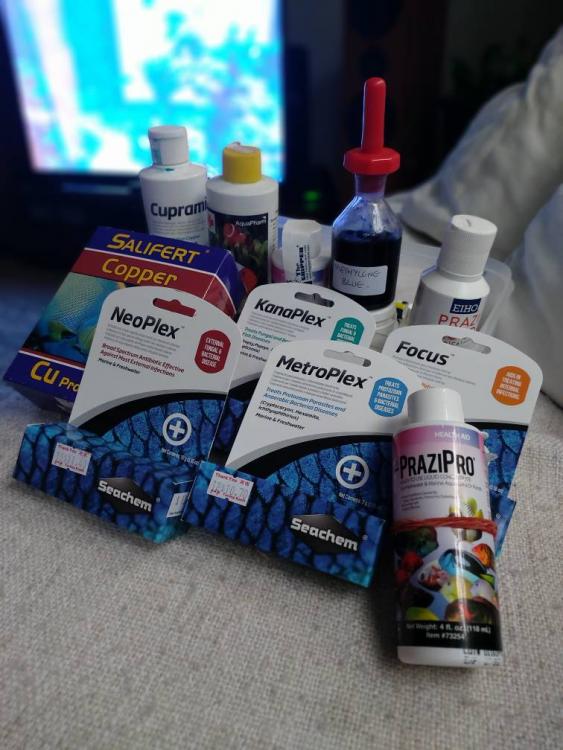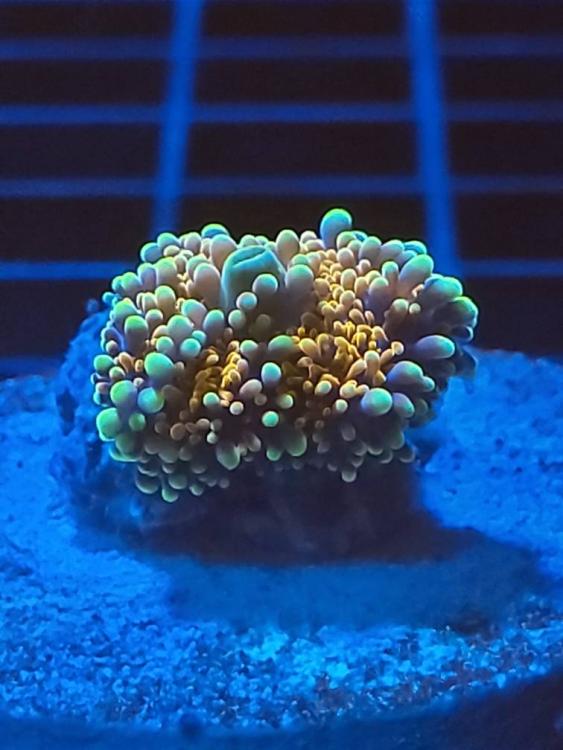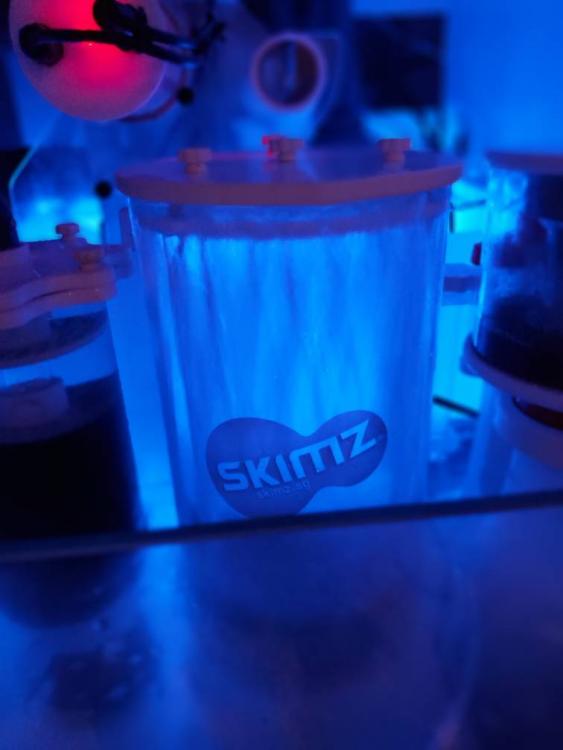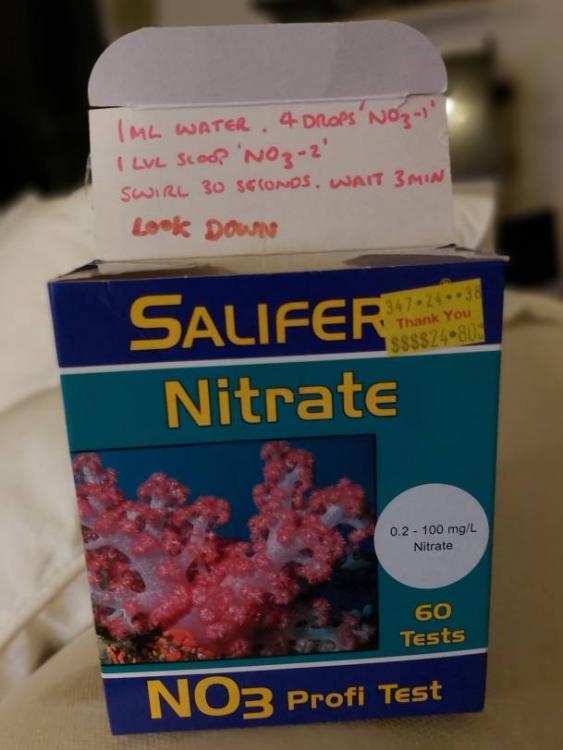-
Posts
313 -
Joined
-
Last visited
-
Days Won
25
Content Type
Profiles
Forums
Gallery
Everything posted by R0B
-

From FOWLR to Mixed Reef to Mangroves to Softies
R0B replied to soggycookies's topic in Members Tank & Specs
How did you keep the temperature stable / chilled for each tank? Sent from Singapore Reef Club mobile app -
Objective 4.... I know I said I would go through my tank setup next... but before we get too far, I wanted to reiterate something I said from the start. That being it may not be necessary to use all the tools listed above, or run each tool at 100% to get the job done. The list above is nothing but a series of tools I will implement on my system and have them ready to go as and when I need to use them. Nothing good happens quickly, and that includes adding a nutrient removal tool or taking a tool away (more so in a mature system). For example Carbon and GFO overuse can easily strip too much out of tank, so you need to be careful to add or remove it. If a coral has spent 6 months getting used to 0.3 phosphate a sudden reduction to 0.00 will certainly cause it stress. So any change needs to be done slowly (if at all. Maybe your tank looks awesome at 0.3 phospates). Whilst I mentioned I will add FM's Phos 0.04 GFO to limit the impact of stripping too much, in the future it may not be even necessary to use a phosphate remover. If I have a thriving refugium I may not need to run an ATS and/or a phosphate remover. However, as my tank is new and as the refugium matures I may discover, via testing regularly, that the refugium is not able to strip-out the nutrients sufficiently, then yes I will add another tool accordingly. As you add (or remove) a tool the trick is to step lightly and go slowly. Starting off with a quarter of the recommended level of Phosphate remover (for example) is fine. Remember corals need stability more then anything. What you don't want to do is artificially solve a problem too quickly. You need to find a long term solution. And that will depend on your tanks maturity, character and changing needs. My plan is to use the automated testing in conjunction with these tools to help me get the tank stable and as it grows understand which tools need to be tuned up or down. I would imagine overtime I can slowly peel away each layer, reducing the total number of tool used, but only if the tank allows me to. I hope that makes some sense. [emoji28] Do you agree? Be good to hear your views. Sent from Singapore Reef Club mobile app
-
Thanks! Good input. Sent from Singapore Reef Club mobile app
-
No worries. The more the better. Glad for your input!! Contradictions with meds is an important consideration. As is bio load so thanks for raising that. We also need to consider that fish produce stress hormones which causes other fish to freak out too. Haha. So keeping fish volume down is a good idea. Agree copper is best being part two of any treatment mechanism. Thanks for adding in, it's only by more people sharing their experiences do we grow and learn. Sent from Singapore Reef Club mobile app
-
OBJECTIVE 4: Ultra Low Nutrients (part 3) 9. PHOSPHATE REMOVER: Some phosphate products remove ALL the phosphate, this is not ideal. (WWC actually runs at 0.1). I plan to use of Fauna Marin's Phos 0.04 product. This will allow for a minimal (yet essential) level of phospate irrespective how much of the remover you use. This ideal as I can place in a reactor and replace only when needed (so low maintence). 10. CARBON: A stable water polishing tool for removing particulates, oders, colour pigments, organics and contaminants. It also removes toxins that corals emit as they fight one another. The debate is whether to have it running 24/7 or to use it more sparingly. I would like to think I will use it sparingly, but reality is I am unlikely to change it out oroffstream on a super regular basis. 11. UV: I also plan to use two UV systems running at completely different flow rates and connected to differing parts of the system to keep the tank and fish is good running order. Whilst people debate over UV's it is becoming clearer that there are multiple use cases, and the size and way they are installed makes a big difference to their effectiveness. The aim is to have One UV in a semi closed loop configuration with the main display (I tried to design the plumbing to do this, but it's not perfect. Looking for a secondhand Deltec 39w which is a long tube thus has a good dwell time). Whilst a second UV will run more typically, taking water from a manifold, and returning it back into the sump. This UV setup is set up for a lower flow rate. Hmmm maybe the larger UV should be used for a slower flow to tackle parasites, and the smaller UV tone used in a fast flow for algea control. Suggestions please! 12. CLEAN SUMP: All sump sections to have a wavemaker (SOW-15) installed so that for 10mins each hour there is agitation. This will keep help keep the sump clean removing detritus buildup. 13. BUBBLE SCRUBBING (optional): Install an air stone in/next to the mouth of the return pump. Switch this on for a few hours at night. Will experiment with timing duration and weekly schedule. Bubble scrubbing allows you to extract toxins, degass co2, slime, algea. Again this is a marginal tool, with some people swearing by it. Will experiment with it and learn accordingly. Everyone's tank is different so it may work well... or may not hahaha 14. OZONE (optional): To get crystal clear water (increases the PAR and Redux), thus reducing organic content. Plan is to use this sparingly. Tie it to my Redox count to keep the water clear. My plan is to switch on for just weekend at the start. It is mainly for astethical reasons to be honest. Does anyone else run ozone?? So these are the main systems I have in place. The next few posts will focus on the tank build... Until then Happy Reefing! Sent from Singapore Reef Club mobile app
-
Happy to help but there are many good reefers here on the forum so do post openly. I am no quarantine expert, just learning a new side of the hobby. Good news is that there are lots of good information out there. Google Humblefish on reef2reef for expert help. Either way, well done on setting up a QT that is a great first step!! I dont know many people who have a QT let alone someone who has been in hobby just 6m. Wow. I am Impressed. As you have been hit twice in six months (assume in your DT?) I would suspect that ICH is now in your system and if you dont want to see more fish death then you should go Fallow. No fish in system for 72-96 days. Some people say ICH is manageable and inevitable so why bother. But, the day your tank has an incident that stresses the fish and Poof!! the ICH will come back with evengence. Note. If you do have ICH then moving bio blocks into QT may be an issue not a solution, so keep your QT completely seperate. You say 'hit and miss' with quarantine. You need to be very regimented with your QT schedule and system. So keeping it stable temp and ph is also important, as well as following set timing. So let's look a little closer... First off let's look at what you treat with... Hyposalinity, there is some (arguably a lot) of evidence to suggest that this is fairly ineffective on mature ICH. As the ich within gils and borrows beyond the slime coat tends to not be impacted too much. So I would fresh water dip for flukes, but personally I would move to a more aggressive copper treatment in the main QT. Now the Meds... Prazi is for worms. Methylene Blue is effective against fungal infections. Seachem Paraguard is a non copper based solution that will treat ICH (treat for 14 days). Ruby Reef's Rally and kick ich combo... Are both copper free treatments designed to cover a broad spectrum of illness including (and specifically) ICH. So a good collection! I would certainly use the non ich treatments as part of the prophylactic treatments so keep them. However I personally would move to the tried and trusted copper treatment (e.g. cupramine) as my main ICH treatment. Obviously only use for fish that can handle it and keep the paraguard and kick ICH for those that cannot handle copper to well. And I would do this post the TTM. You mentioned 12 hour TTM. I understand that there may be some logic to that as you said you use pails (so water temperature is a consideration). But fish get stressed when you move them and this reduces their ability to fight off disease. As you have to capture them (not pour) fresh water dip (to ensure no flukes and to stop water transfer), then place them in new water this can increase their stress levels. Also If the water is different temp or PH they will stress them out. It is recommended to leave them for 72 hours in one tank before you move to another tank/pail as so to maximise the ICH lifecycle to best effect. You also have to clean, sterilize and dry old tank well, to be ready for it to be used again. 2ft tank. Is good enough. medicine can be scaled to water amount, So dont worry. Obviously bigger fish would prefer a larger tank to swim in, but real world constraints often apply. Dont over feed in the smaller tank as if you run copper you cannot run carbon. Suggest you get a good waterfall filter (seachem Tidal or fluval c2?) Overall you are doing really well. Just some small adjustments. Keep up the good work! Sent from Singapore Reef Club mobile app
-
I was thinking of a Tomini. I know it is the law to have either a hippo or a purple tang, but I think these three would make an interesting mix. That said, I have been debating if the Yellow Tang and White Tail is actually enough, and simply fill the tank with other types instead. Sent from Singapore Reef Club mobile app
-
That is a great suggestion. Thanks! I was thinking of getting a Starry Blenny so hopefully Mr/Mrs White Tail will get along. Sent from Singapore Reef Club mobile app
-
Yes that is the little fella. The white tail I think is a good option, something a little different but also a hard worker. I hear they are normally compliant so will just hope he(she?) is going to be a model citizen. Plan is to catch my Yellow Tang and reintroduce them together to reduce any aggression and then let them sort it out a fresh. Whilst talking about fish, does anyone have any suggestions for stocking? I have a stocking list already but am always looking for something a little different. Let me know your thoughts, but whatever it is it has to be a good looker! Haha. Sent from Singapore Reef Club mobile app
-
Yes awaiting shipments. If you see one let me know I ran out of space so got this cupboard to store my calcium reactor. In retrospect I should have got this earlier and placed all my electronics in it. But it works well. Had a little 40L tank that fits perfectly on top, so I tied it into the main system and will use it as a mini frag tank. Sent from Singapore Reef Club mobile app
-
1) Yep my sump which is on industrial rollers. I just have to undo a few unions and I can roll it out. I have a limiting screw that means it cannot come out too far and place too much streemss on the rollers (or tip over!). There is a handle under the front. However, it moves surprisingly easily. I have on occasion found myself grabbing the actual glass sump and pulling, but then I need to remind myself that that probably isn't the smartest move. I have been thinking of moving it via an actuator, but that is a future project. 2) Why multiple sources of nitrate removal? That is a good question. Plenty of fish but not too many. My objective was to have an overlapping controllable set of tools which need little maintenance. I think the key is to use the tools as needed, not necessarily all at same time. Another key element was to size the tools to solve the problem at hand. Each of the tools, refugium, ats and zeovit can be dialed up or down to meet my needs. My objective was a system capable of zero NO3 and PO4, allowing me to feed aggressively (Heavy in, heavy out), the combination of the tools certainly allows me to do that,but going too low can also cause issues. The zeovit captures the ammonia and produces bacteria. The refugium strips out any remaining nitrates and acts as a filter, it also is a safe place to grow Copepods as food source for the fish (I want a dragonette). The macroalgea will only grow as a function of the available nutrients, so is kind of self limiting. I see that the ATS is a fine tuning device (as i can control size of mesh, lighting schedule and water flow) and will be activated as and when needed. Typically I find an ATS works very well in first year of a tank. 3) Multiple dosers why? I intend to dose calcium chloride, sodium bicarbonate and trace elements. Basically the Tropic Marin balling solutions ABC. Why so many dosing pumps? Well the GHL KH director and ION directors (still on order) are automated testing and control tools. Between them they will automatically test KH, Nitrate, Calcium and Magnesium (as well as sodium and potassium). The GHL systems basically require a dosing unit each to operate; pulling and dispelling water samples, adding reagents or reference liquids. The remaining dosing unit will take the information from the Directors and adjust up or down the necessary dosing amounts of the alk, calcium, magnesium and trace elements. 4) Alkatronic vs KH director? Well I have no first hand experience of the alkatronic, but i hear good things about it (bar its a little noisy). I understand you can connect an alkatronic to an APEX controller via a module in the same way I can connect the KH director to the profilux. Both systems can also be used stand alone. Both the alkatronic and the KH director have dosing pumps that not only draw reagent and sample water but also can be used to add Alk to the tank, controlling the level of dkh if it drops below a certain threshold. They both use reagents in the form of acids that they titrate in sample water until it meets a particular ph, so you need to buy these reagents ongoing. Both have their issues (bubbles in tubes is common issue but both companies say have fixed) and both require a little configuration to get going. Alkatronic needs you to mix its reagent (which to me adds more uncertainty). But overall with regular calibration they do the job if monitoring dkh and keeping it in check. 5) Why not use bigger CR? Calcium and alk demands go up and down. The calcium reactor will do the heavy lifting of adding calcium, alkalinity and trace elements and will be controlled via a continuous dosing pump pulling effluent (with ph set). However, to cope with the increasing or decreasing needs the ION director will control this via direct dosing. Combining the two tools should produce much more stability. For this to work I have to dial back the CR effluent to give me enough room to potentially decrease the amount needed to dose. If I see a trend I can simply turn up or down the amount of effluent out of the CR. 6) QT. Thanks. Yes, If you have bigger fish then yes bigger tanks may be needed. My fish tend to be small juveniles, as I tend to pick fish that look at the correct scale to the DT and my DT isnt huge. But my Tangs all been through it and they are all good. Treating fish prohyliactically allows you to ensure any internal issues are sorted. I think QT is also an art, and I am not skilled enough to spot all potential issues in observation. I try to treat for the most common issues. Does it stress the fish? actually I have not lost a single fish in QT since I started doing this, which I hope means they don't get too stressed. As far as how many I can add. Well this is theoretical as I find I cannot get the fish I want and have to wait to get them into Singapote (anyone have a white tail bristletooth tang?). But I would tend to add slowly and yes typically only add one or two in a batch. But I dont have a fixed number. I think more about how many extra cubes of food I would be adding to the DT and dont want to do more then half a cube at a time. Sent from Singapore Reef Club mobile app
-
There are various tools available to you to reduce nitrates so much of the decisioning about a refugium or ATS or other tool relates to everything from your coral and fish stocking, feeding amount and type, flow, through to what other nutrient removal tools you will have in place. Eg.roller mat or socks etc... (I recently wrote a rather long post on the same). A refugium tends to do the heavy lifting of any nutrient removal system, and can in many ways serve as the only tool you will need. Its size isnt as important as mine is about 7%) but it depends on the lighting source above the fuge as well the nutrients available. As reefer we know stability is key. So on top of a refugium I also run an ATS. The reason I use both is so that I have more control. A refugium is like a big oil tanker, any change in direction are slow (and this is a good thing). However if my coral growth increases disproportionatly to the growth in my Refugium then I would see a spike in nitrates. As such I see an ATS as a slightly more nimble tool. For me an ATS is pound for pound doing a better job then the fuge at lowering my nitrates. But combined I find is best of both worlds. An ATS can be controlled with the lighting schedule and size of the unit/mesh size, as well as water flow. So adjusting either of these elements allows for the nutrient removal to be easily dialed up as well as down (all the way zero by switching it off haha). Refugiums also can be controlled but it is as I said much bigger and will (and should result in) slower changes. To me they compliment one another. The refugium is the foundation with the fine tuning ATS is available and used when needed. Sent from Singapore Reef Club mobile app
-
I like the minimalist approach. Loads of negative space allowing fish and corals room to grow, and allowing for access to the corals for husbandry. Placed away from back and has a small footprints allowing loads of flow around the tank and corals. Slight variation in height within each scape allowing for different corals to grow out but not shade out one another too badly. Fish friendly as has places to hide (although maybe too minimal if you have loads of tangs, as they can still see one another so think about stocking and order of placement). Most of rockscape is around 50% of tank height allowing for growth. If anything you could shave off an inch. But that is just being hypercritcal, overall is really really good. Looking forward to seeing the new tank mature out. Good luck. Sent from Singapore Reef Club mobile app
-
Objective 4: Ultra Low Nutrients (part 2) 5. FLOW: in my view one of the most important parts of a low nutrient system. I plan on having a lot of flow in the right place. Consistent flow into the tank is achieved via two return pumps that are connected to flow meters. The flow meters allow you to see not only the volume but also to detect any slowing over time. Is amazing that my old 6000 L/Hr pump on full blast only gives me 1020 L/HR at the return nozzle! Head pressure and restrictions are clearly something you need to consider when you buy a pump for your tank. The flow meters are great tools, as they allow me to monitor any reduction in flow overtime, thus, indicating when I need to maintain the pump. I simply place alarms on the system to indicate if the flow is too low. The GHL flow meters have no moving parts unlike their Apex equivalent so they don't deteriorate overtime, nor need their own maintenance to ensure accurate measurement. The plan is to get the control system to make adjustments to the pumps automatically to maintain flow (however I don't think I can do that with the pumps I have.... hmmmm maybe time to get a M3 when it comes out hehehe). I also flush the lines into the tank, simply by switching off the return on a regular basis. The backward pressure helps keeps the return lines clearer. The flow I have is aimed at maintaining a 4x turnover in the sump and 100x flow within the tank. The Tank flow is served by 2x MP40s on each side of the tank, along with 2xSLW20's which are placed on the back wall (which I will move to MP10's in the future... I here there are new MP's coming out soon!). I will also add a Gyre shortly, most likely to the back wall aswell given the depth of the tank, and as such I am thinking about the new Red Sea 45 simply as they are easy to maintain. 6. ZEOVIT REACTOR: The skimz zeovit reactor has auto flushing capability making it ideal for my low maintenance objectives. Use smaller model as it covers the flow rate needed upto 900L tank. Love this little toy. 7. BIO MEDIA: Installing bio media is beneficial, however it needs to be placed in flow areas that allows for the water to be in contact with beneficial bacteria. Placing the media in low flow areas is doing little more than producing a nitrate magnet. As I built a section of the sump to house the media (as well as having bio bricks in other areas) 8. SKIMMER: You may wonder why this is lower down on my list of essential tools for combating nitrites. Well, on my system this is because of the roller mat, refugium and ATS. Given the bioload actually reaching the skimmer there was not enough organics for the bubbles to properly hold their form, as such i had loads of micro-bubbles and hardly any skimmate irrespective of how I control the air flow, water input and water height. The skimmer I had was rated for a tank upto 1500L so much bigger then my system, reducing it down to a skimmer that is rated for my system has improved the skimmers performance. One of the only cases in the hobby where bigger equipment is worse haha. I currently have a tiny Curve 5, which I have to say that it is cracking good skimmer. It has a air hose leading outside to a carbon filter. The filter is made out of a simple DI replacement canister and was placed on the end of the air tube to reduce any impact of pollution such as when they fog for mosquitos and I forget to disconnect the hose inside. There are a still a few more tools available to help reduce nitrates and phosphates so will cover the final ones next post. Until then, happy reefing! Sent from Singapore Reef Club mobile app
-
Really nice rock structures. Should allow for plenty of flow and small foot print. Is there enough real estate for your amazing and vast collection? Haha Sent from Singapore Reef Club mobile app
-
Found this 1cm gel like pest at the base of a favia. Luckily it is in my coral quaratine tank. Any idea what it is? Thanks Sent from Singapore Reef Club mobile app
-
OBJECTIVE 4: Ultra low Nutrient Tank (part 1) I have or am in the process of installing several Nutrient Removal solutions. I have listed them down below (in a rough order of importance)... 1. RODI. Every successful reef tank starts with good water. A reasonable RODI system producing zero TDS allows for you to ensure the tank starts off with a strong building block. 2. ROLLER-MAT. These simple yet ingenious devices not only have a much finer mesh then socks removing much finner particulates, they also need far less maintenance as they typically last several months before replacement. One benefit is you are literally removing the detritus out of the water column, as opposed to a sock where the detritus sits in the bottom of the sock constantly leaching nutrients back into the water like an ammonia rich tea bag. I designed my whole sump around having a roller mat, sadly not all sumps come in a roller mat freindly model (any tank manufacturers out there listening!). The roller mat dose such a good job of removing nutrients that I ended up having to reduce the size of my skimmer*. So those of you upgrading to a bigger tank and thinking of getting a new larger skimmer, may want to consider an alternative option. (*note need for gas exchange) Personally I don't enjoy maintenance, I would rather spend my time more productively. So to find a solution that is not only so much better in its execution, but also takes the worry out of having to constantly remove and clean socks at a certain time to ensure stability, well it is a win win for me. They are amazing tools and I would never have a system without one. 3. REFUGIUM. Powered by a strong refugium light to ensure fast growth. The aim is to only use sterile cheato (macro algae tends to have loads of hitchhiker's, so I quaratine mine). One consideration of a powerful refugium light is to check the PAR and height placement as to ensure you don't overexpose your macro algea (turns white). I have a Kessil H380 (which just stopped working yesterday - sob sob sob) so ended up building my own light shade with built in defuser. Now, you may not recognise it but refugiums are actually a highly controlable nutrient export tool. You can amend the amount of macroalgae in the system keeping the ball of chaeto to a set size/weight (over time you will figure out how big it needs to be); You can amend how much you harvest at any given time; how long you leave the lights on; how strong the light are; (if you have a good sump) you can even control how much water flows through the refugium; Furthermore you can get differing macroalgeas that grow (thus intake nutrients) at differing rates - Although my search for dragons breath macroalgae is still yielding no leads haha. As such there are many ways you can dial in the refugium into your nutrient removal toolkit. You dont need to have a large space either to achieve results. Mine is just 35L in volume which is c.7% of my total water volume. Much lower then the recommended 15-20%. Yet it is more than sufficient as I use it in combination with the other tools mentioned, plus I have / had (sob sob) a powerful light to enhance growth rates. So even if you dont think you have enough space, use what you have got available and if necessary just increase the photoperiod (to a certain degree) Now, I dont have a macro algae reactor. I used to own one but found it difficult to keep, also I prefer the ease of a refugium. However, if space is an issue then you can always consider one instead of the refugium. 4. ATS: An Algae Turf Scrubber is dollar for dollar the best nutrient removal solution IMHO. An ATS allows for finer control of nutrient removal beyond that of the refugium as both the flow into the ATS and the photoperiod of the light can be easily amended to either increase or reduce it's overall impact. Further, one can even downsize the actual mesh size inside an ATS to control exactly how much GHA can grow. Another benefit is that oxygen is produced by photosynthesis. As such (especially in a waterfall design) an ATS provides another means of gas exchange. Given this, I intend to use a small ATS (I built my own) to fine tune the nutrient removal in my system. It will be part of a series of tool that I can use. But to be clear, the idea with the tools mentioned above is to use them when needed, and not necessarily all at the same time. So that is my top four. In part 2 I will continue to go through what other tools I have in place on the new build in order to keep nutrients exactly where I want them. Until then happy reefing! Sent from Singapore Reef Club mobile app
-
Great tank. Thanks for sharing!! Sent from Singapore Reef Club mobile app
-
RODI SETUP: It is said that reefing is simply about keeping good water. Whilst one could argue there are many other aspects, water quality for sure is key without it you wont be going very far. Hence, for my new set up I wanted to make sure that I had good quality RODI water. So first off why would one need RODI vs. Dechlorinated water? Singapore is awesome, and they have amazing quality water. I get 68TDS for my water from the tap, that is typically cleaner then rain water, Great job PUB Singapore! Still for reef needs 68 TDS is still too high. So what does an RODI system do? Firstly RODI systems remove sediments, silt, clay... (it's amazing just how dirty the sediment filter gets from tap water!). Typically a four stage system will have one 5 micron sediment filter. (Bigger systems can couple this with a further 1 Micron filter). Secondly the carbon filters and RO membrane(s) remove any unwanted chemicals like chlorine, chromium, pesticides. The DI resin typically focuses on the removal of heavy metals like copper as well as some acids. Combined they remove impurities, microorganisms, disinfection byproducts, inorganic chemicals, organic chemicals, and even naturally occuring radioactive nuclides! Now whilst Declorinated tap water is okay to use short term all the above elements even in extremely small ppm/ppb will build up over time (Silicone even absorbs heavy metals). This will start to cause issues (typically algae related) for you. My system is currently 7 stages. 1x 5micron sediment filter, 2x Carbon, 2x RO membranes in water saver configuration (the waste water of the first membrane goes into the input of the second filter, and both RO membrane accepted water are joined together). I run 2x DI resin filters. The idea here is to hold the Cation and the Anion resins separately. Typically they deplete at different rates so only one needs to be replaced versus a single mixed bed resin setup that you replace both resins when just one of them depletes. My system also comes with a micro controller, which auto flushes the system, along with keeping track of water quality (alarms come on if water quality is poor). Flushing makes the RO membranes last much longer. In the end you only need a system that produces 0 TDS, additional stages and control systems do nothing more then make the unit more efficient. Whilst the micro controller is awesome, simple systems off lazada will work too. Hope that helps. Happy reefing everyone Sent from Singapore Reef Club mobile app
-
Will do shortly as going into my tank setup. Sent from Singapore Reef Club mobile app
-
OBJECTIVE 3: PEST FREE: The aim here is to use effective preventative quarantine procedures, medication and observation to reduce the probability of pests entering my system. The hope is to achieve ICH and disease irradication in my fish (plus learn a new reefing skill), and for the Corals it is all about pest identification and removal. Note. In addition to chemicals and medications I will also use the natural ecosystem to keep pests at bay. Wrasses, Cleaner shrimp, file fish etc etc In order to implement I have two small cheap 20L tanks which have their own HOB waterfall filters and link to a DIY chiller. Also I monitor Ammonia via the Seachem Badge which is really handy. The tanks allow for me to perform the 'two tank transfer' method as well as prophylactic medication of the fish. In addition to the two tanks I have a 50L observation tank for corals I picked up second hand, and a small 10L tanks for coral bathing. (Just a tip I got hold of a glass marker and i use it to write on the face of the tank what treatment is currently happening, is good to keep track as to what meds are in the tank and when you need to transfer them again). CORAL Corals are removed from plugs and dipped in the 10L tank with some Coral RX. The tank has a small circulating pump (want to find a mini wavemaker). After 30 mins they are inspected woth a magnifying glass and then placed in to the 50L tank where they stay for at least a month. They are dipped a few extra times during their stay in quarantine. For my dips I use Byer, RX and Hydrogen Peroxide (if I know the coral can handle it). Why quaratine coral? Well, just to give you an idea. I picked up some frags from fellow reefers prior to the covid CB, between them the frags had Aiptasia, Vermetid Snails, Red Bugs, Nudibranch and various worms. I would hate to imagine what would happen if I placed all of those pests directly in my tank. My rule is simple. NOTHING gets into my tank that hasn't been quarantined and is pest free (I even quaratined the macroalgae!) FISH As for the fish they initially get a commercial dip before going for a fresh water swim for 3-5 mins. After that initial treatment they are placed into one of the 20L tanks, which is what I use for the two tank transfer method. The tranfer method basically involves keeping the fish for 72 hours in one tank before moving them into another tank. This is repeated four to five times. Each time you do it you clean out the old tank, to make it sterile. The two tank method significantly reduces the probability that ICH is still on the fish. I fresh water dip during transfers just to make sure any flukes etc are gone and to make sure there is limited water droplets transferred from one tank to the next. I use water from the main display so the fish are acclimated to the main tank at all times. During the first tank transfers I use methleyne blue to remove any fungal disease. For the second and third I use Prazipro. For the third and fourth transfer I also treat with the likes of metroplex, kanaplex or neoplex (which you can bind to fishes food with the use of Focus). If a specific fish is susceptible to a particular ailment i will tailor the treatment. The tanks also have a dedicated mini 9w UV to kill any free floating parasites. Well that is the hope. Obviously if a fish has a particular issue then I treat for that. After the transfer method is complete. I move the fish for a fifth time and treat with copper for 15 days. All in all it takes about four weeks and the fish are ready to go into the main display. Honestly, yes it is a big pain in the butt as if you miss the transfer window you have to start over, but once you get into a rhythm it doesn't take too long to do. To me having healthy fish and corals is important. There is something rewarding letting the little fishes out after quaratine knowing you did what you could to improve their health. Anyway I hope that gives you a good idea of what my quarantine set up is like. Next update I will start to discuss one of the most important aspects of the reefing hobby, the water! Until then happy reefing. Sent from Singapore Reef Club mobile app
-
That is sooo awesome. That Clam is clearly enjoying his/her time in your tank. What type of clam is that? Certainly an ultra of some sort. I have created a little space in my tank for a few clams, hope I can find something as lovely as that. Great job Sister as always your tank in inspirational. Sent from Singapore Reef Club mobile app
-
A new toy. The Skimz ZAR-127 automatic zeolite reactor takes all (well some) of the effort out of the zeovit system. I am always looking for low maintenance, which i take to mean that I dont have to intervene too much. I must say it is doing really well! (fingers crossed I haven't hexed it saying that). It has an adjustable flow rates for differing amounts of the zeolite media and to suit different tank sizes. What isn't really advertised is that you can double the flow rate at the touch of a button. As such it can run from 60L/H to 480L/H, which will happily serve tanks from 120L in size to roughly 900L. It's great to have a little upgradability built-in and keep the footprint down. Well done Skimz! Sent from Singapore Reef Club mobile app
-
Hahaha. Now I feel mine must have been really high. Lol. Don't worry I have done that a couple of times forgetting which ones you read from the side and which ones you should read top down. I started writing tiny notes on the inside of the lid (of the test boxes) to remind me. Sent from Singapore Reef Club mobile app
-
Agree with Mr Soggy a water change and a quick test of ammonia or nitrates should do you fine. Dont worry. I reached 100 when my tank went through its inital cycle. Scary right hahaha. I didnt add any more ammonia, did a 30% water change and over time it fell. When it reached 20 I added in some clown fish and despite the fish and subsequent feeding it just slowly decreased. I was running my only my skimmer and roller mat, along with a small bag of GFO. Just be patient - a great reefing skill. Sent from Singapore Reef Club mobile app



